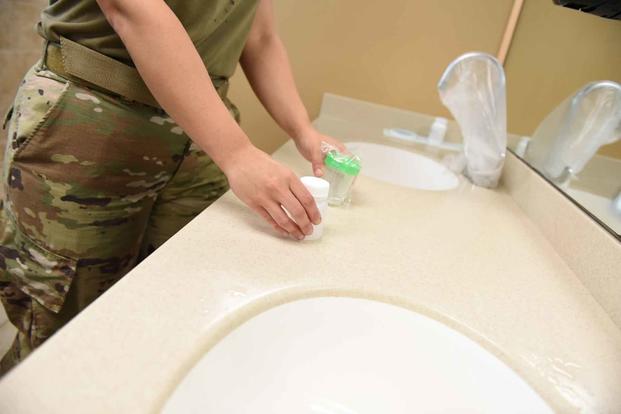

The opinions expressed in this op-ed are those of the author and do not necessarily reflect the views of Military.com or the Department of Defense. If you would like to submit your own commentary, please send your article to [email protected] for consideration.
For almost 20 years, “Don’t Ask, Don’t Tell” stood as a limit on the private lives of thousands of service members. Its repeal in 2011 was considered a victory for personal liberty and a way to expand the pool of citizens eligible to serve.
There’s another area where social norms have changed rapidly and the military is out of step with the broader public — marijuana use. In service of protecting individual freedoms and fortifying the military’s labor pool, I propose a new declaration: “Don’t Ask, Don’t Test.” The Department of Defense should stop asking whether its members use marijuana, and the military should stop testing for it.
The military does not routinely breathalyze its sailors for alcohol, an arguably more destructive substance for military members. It should likewise stop the outdated obsession of regularly testing for THC.
Imagine a force in which talent, energy and intelligence are prioritized regardless of off-duty recreational vices. Consider the savings in time, money and energy: The military tests more than 2 million service members annually and has a sizable urinalysis establishment to support the effort.
This change could relieve commanding officers of a burden and spare them the frustration of prosecuting their own service members. A sailor “popping positive” meant administrative man-hours for our urinalysis officers, our legal officer and our commanding officer, and major frustrations for that sailor’s work center, not to mention the workload for other personnel external to our unit.
Like with President Bill Clinton’s original policy, this new “Don’t Ask, Don’t Test” policy should apply to recruitment as well as to current service. Take my branch for example: The Navy recently suffered a 20% recruitment shortfall from its goals. In an attempt to enlarge the pool of recruits, it has continually lowered standards with interventions that overtly diminish the organization’s mission. Rather than recruit and capture the large block of American cannabis users, the Navy is piloting accepting recruits with lower ASVAB entrance exam scores, down to the 10th to 30th percentiles.
The National Institutes of Health reports that nearly 30% of American 12th graders have used cannabis. Other studies show even greater numbers, with almost 20% of 12th graders reporting using marijuana within 30 days of polling. Regular use is significant among the American populace.
Which pool of labor would more directly accomplish the mission: a distributed 30% of American cannabis users, or 20% of the empirically lowest ASVAB entrance test performers?
Accepting lower entrance exam scores is hardly the only compromise: The Navy is also experimenting in reducing high school and GED requirements, lowering fitness requirements, and relaxing up-or-out policies (keeping underperforming sailors around).
The modern military is built upon managing, maintaining and fighting complex hardware. The enlisted sailors in my avionics division often had complicated engineering and maintenance diagrams to understand in order to perform their duties. Officers must have the aptitude to make quick tactical decisions with their assets. A force of fighting machines requires more brain than brawn; diminishing the human-capital base should be the last resort of an aspirational service like ours.
Understandably, leadership is handcuffed by marijuana being a Schedule 1 controlled substance. I cannot fault the Department of Defense for failures of the greater federal government. To its credit, the security establishment has some leeway for excusing marijuana use several years past and an existing — although very convoluted (Table 2.20) — marijuana waiver program. The Navy is even issuing waivers for traceable amounts of THC discovered during boot camp. But this does not solve the problem of the large numbers of citizens who intend to continue to use.
Military leadership cannot, should not, and need not go so far as to “allow” illegal substances or create conflicts between the Uniform Code of Military Justice and federal law. They need only turn a blind eye to off-duty use. Currently, the DoD tests only for steroids on an ad-hoc basis (likely, if it meaningfully detracts from the mission). They ought to do the same for marijuana.
To be clear, recreational drug use itself may still be detrimental to the military’s mission, even confined to weekends and the same off-duty limits as alcohol. But we ought to disfavor interventions that directly diminish the mission (objective widespread reductions in talent) relative to those interventions that do so only tangentially (marginal disruptions from occasional marijuana misuses). Why should we administer routine tests that threaten to compromise our own readiness?
As states adjust their laws, and as cultural forces shift, the military too must adapt.
— Jasper Burns is a former Navy lieutenant, law student at Stanford Law School, and Knight-Hennessy scholar. He previously served as a White House social aide, and as a military fellow at McKinsey and Company.
